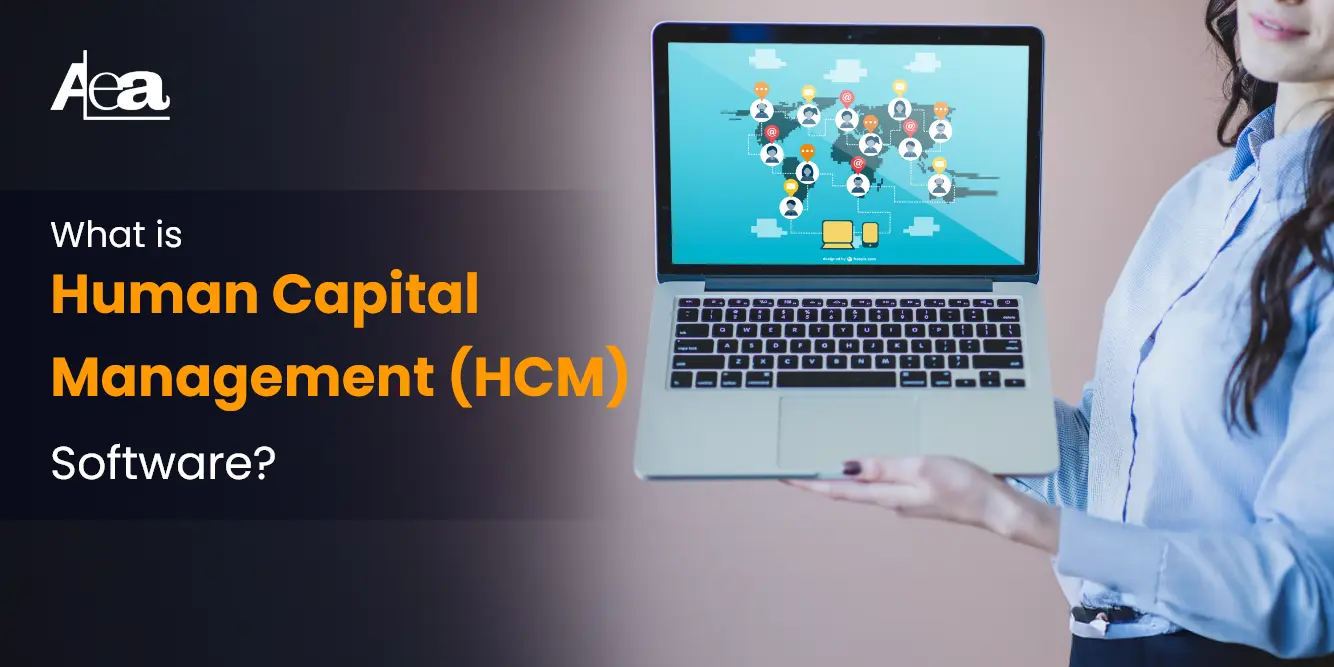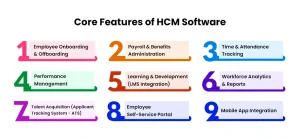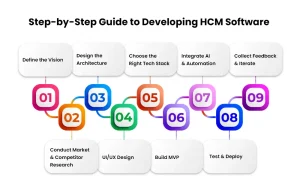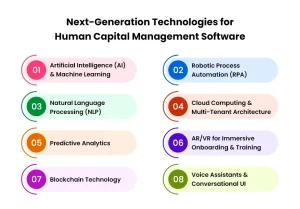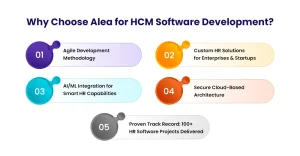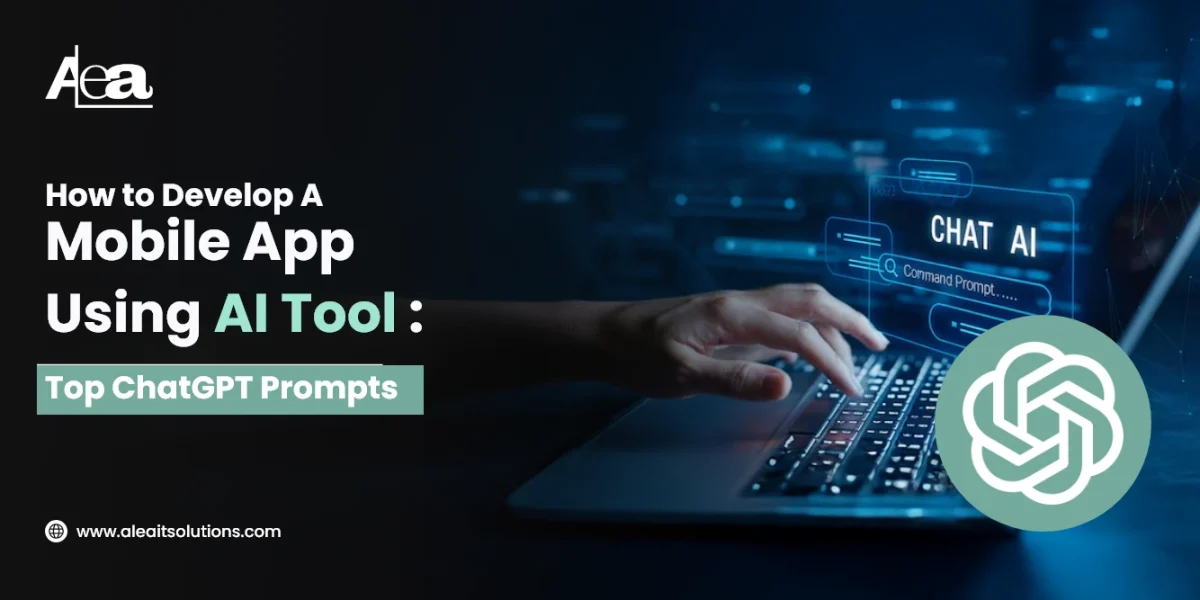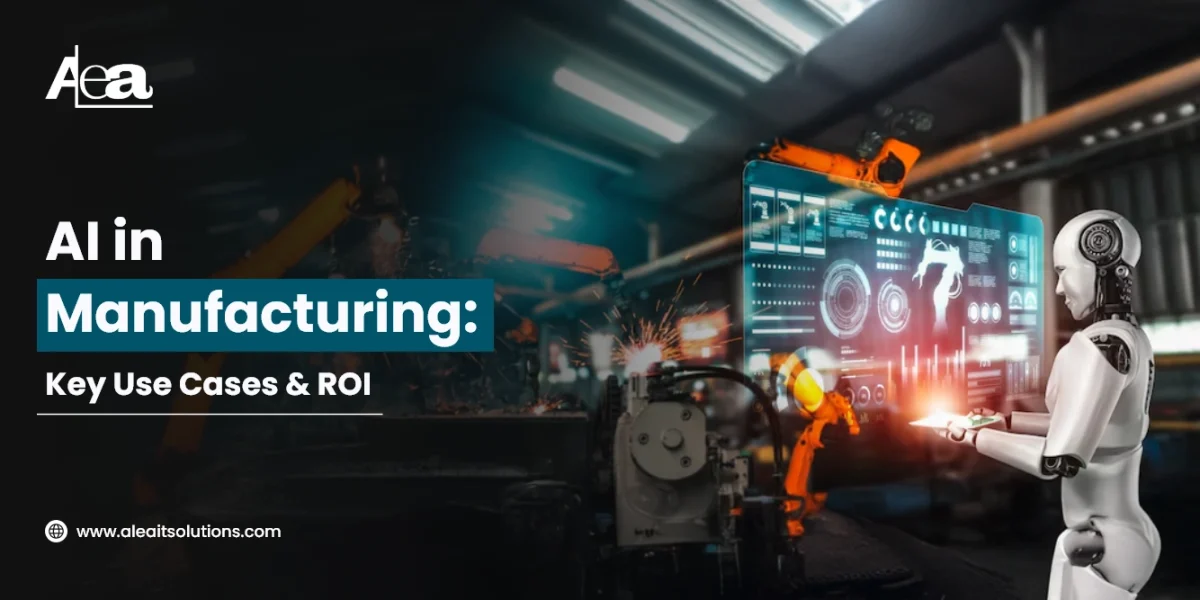In today’s fast-paced digital era, Human Capital Management Software is revolutionizing how businesses recruit, manage, and retain their most valuable asset people. With remote and hybrid workforces on the rise, global talent acquisition becoming the norm, and employee well-being gaining priority, companies are reimagining their HR operations through advanced software solutions.
Gone are the days when spreadsheets and disconnected systems could support a growing workforce. Organizations now need intelligent, integrated platforms that streamline HR functions, from onboarding and payroll to performance management and learning development. That’s where HCM software steps in.
As businesses scale globally and prioritize the employee experience, developing a custom HCM system has become a strategic imperative. Whether you’re a tech startup aiming to build a SaaS product or an enterprise optimizing internal HR infrastructure, creating a tailored solution ensures flexibility, compliance, and long-term ROI.
In this comprehensive guide, we’ll walk you through how to develop Human Capital Management software, covering:
- What HR Management Software Is & Why It Matters
- Essential Features Every HCM System Should Include
- Key Development Steps from Planning to Deployment
- Modern Technologies Powering HCM Platforms
- Challenges to Watch Out For
- Revenue Models and Monetization Strategies
- Future Trends Shaping HCM Solutions
Whether you’re building from scratch or modernizing an outdated HR system, this blog will serve as your roadmap to delivering a robust, scalable, and user-centric HCM platform.
What is Human Capital Management (HCM) Software?
HR Management Software simplifies and automates human resources processes such as hiring, onboarding, payroll, performance reviews, and employee record-keeping. Designed to improve HR efficiency, this software helps reduce manual workloads and enhances compliance with labor laws. Organizations can manage talent, track attendance, generate reports, and streamline communication.
Modern HR management solutions are often cloud-based, secure, and scalable, suitable for businesses of all sizes. Integration with third-party tools such as accounting and ERP platforms adds further value. Using HR software also ensures data accuracy and facilitates informed decision-making for long-term workforce planning and strategic HR development.
Human Capital Management Software is a comprehensive digital solution designed to manage every stage of the employee lifecycle from recruitment and onboarding to performance evaluation, development, and retirement.
It serves as the technological backbone of modern HR departments, streamlining administrative processes while enhancing strategic decision-making and employee experience. At its core, HCM software goes beyond traditional HR systems by offering a holistic, integrated approach to workforce management. It combines a suite of tools that handle:
- Core HR functions: Employee records, benefits administration, time and attendance tracking, payroll processing, and compliance management.
- Talent management: Recruitment, applicant tracking, onboarding, training, succession planning, and performance reviews.
- Workforce analytics: Dashboards and reporting tools that offer actionable insights into employee productivity, turnover, engagement, and more.
- Employee experience tools: Self-service portals, communication platforms, and engagement surveys that empower employees and improve satisfaction.
By consolidating these functions into a single platform, HCM software enables HR leaders to eliminate data silos, automate repetitive tasks, and make informed decisions based on real-time data. Human Resource Management Software is an all-in-one digital platform used to manage the complete employee lifecycle from recruitment and onboarding to training, payroll, and exit management.
It centralizes employee data, automates administrative tasks, and enhances HR operations with minimal manual input. Cloud-based HRMS allows real-time access across departments, supports employee self-service, and ensures data security.
The software can also include performance management, benefits administration, and compliance tracking. By using HRMS, businesses can foster greater employee engagement and alignment with organizational goals. It’s particularly valuable for scaling HR functions in growing businesses and ensuring consistent HR practices across locations.
Popular HCM Platforms in the Market
Several leading HCM platforms have emerged as market leaders, catering to different organization sizes and industries:
- SAP SuccessFactors- A scalable, cloud-based HCM suite used by large enterprises. Known for strong talent management, global compliance, and analytics capabilities.
- Oracle HCM Cloud- Offers end-to-end HR solutions including AI-driven recommendations for recruiting, learning, and workforce planning.
- Workday– Popular among mid-to-large-sized enterprises for its intuitive UI, flexible reporting, and machine learning-powered analytics.
- BambooHR- Tailored for small to mid-sized businesses. Features include applicant tracking, onboarding, e-signatures, and performance management.
- UKG Pro (formerly Ultimate Software)- Combines HR, payroll, talent, and time in a single solution. Known for strong employee experience and people analytics features.
These platforms serve as benchmarks for businesses looking to either adopt a new HCM system or build a custom solution with tailored workflows, integrations, and branding.
Why Build an HCM Solution Now?
The Human Capital Management (HCM) software market is experiencing rapid growth, driven by sweeping changes in how organizations manage people, technology, and work environments. As digital transformation accelerates across industries, HR departments are under pressure to become more agile, data-driven, and employee-centric.
According to MarketsandMarkets, the global Human Capital Management (HCM) software market is projected to expand from USD 22.3 billion in 2021 to USD 32.0 billion by 2026, reflecting a compound annual growth rate (CAGR) of approximately 7.5%. This trajectory underscores the growing importance of HCM solutions as mission‑critical infrastructure in a post‑pandemic world.
The best Human Capital Management (HCM) software provides an integrated suite for managing workforce planning, talent acquisition, employee engagement, training, compensation, and succession planning.
Top solutions like Workday, SAP SuccessFactors, and Oracle HCM Cloud offer AI-powered insights, mobile access, and real-time analytics. These platforms help organizations align talent strategies with business goals, reduce turnover, and improve employee satisfaction.
The best Human Capital Management (HCM) tools are user-friendly, customizable, and scalable, catering to both SMBs and enterprises. Choosing the right one depends on industry needs, HR complexity, and integration requirements. Excellent support, regular updates, and robust data privacy features are additional decision-making factors.
But what’s driving this surge and why should you consider building an HCM solution now?
Key Market Drivers:
-
Remote and Hybrid Workforce Management-
With remote and hybrid work models becoming permanent fixtures, companies need scalable digital tools to manage geographically dispersed teams.
HCM software supports virtual onboarding, attendance tracking, remote performance reviews, and digital collaboration making it indispensable for modern workforce management.
-
AI-Powered Recruitment and Onboarding-
Develop an AI-Powered HRM Software to transform talent acquisition and streamline workforce management. AI and machine learning are revolutionizing the recruitment process, enabling smarter resume screening, automated interview scheduling, and personalized onboarding.
By integrating AI capabilities into Human Capital Management (HCM) systems, companies not only reduce hiring time but also enhance the quality of hires, giving them a competitive edge in today’s fast-paced talent market.
-
Emphasis on Employee Experience and Engagement-
The future of work is employee-first. Organizations are investing in tools that track employee sentiment, enable feedback, and promote learning and development. A custom HCM platform tailored for engagement, wellness, and career growth can significantly boost retention and productivity.
-
Compliance and Regulatory Complexity-
Labor laws, tax regulations, and workplace safety requirements vary across regions and they’re constantly evolving. A smart HCM system ensures compliance with global and local regulations, helping companies avoid costly penalties and maintain employee trust.
-
Digital Transformation in HR-
The shift toward data-driven decision-making has led to the integration of custom HR Management Software Solutions with broader enterprise systems like ERP and CRM. Companies now require unified platforms that offer predictive insights, real-time dashboards, and seamless integration with third-party tools.
Why Now Is the Right Time
The post-COVID business landscape has accelerated digital adoption by several years. Startups and enterprises that invest in building human capital management software solutions now can tap into a growing market, solve emerging HR challenges, and position themselves as innovation leaders in workforce technology.
As demand rises for customized, secure, and scalable HR solutions, this is a prime opportunity for developers and businesses to deliver platforms that not only automate workflows but also elevate the employee experience.
Core Features of HCM Software
To meet the evolving needs of a modern workforce, human capital management software must offer a robust suite of modules that cover the entire employee lifecycle. These modules should not only streamline HR operations but also foster engagement, compliance, and strategic growth. Below are the essential components of a full-fledged HCM platform:
1. Employee Onboarding & Offboarding
A seamless onboarding experience sets the tone for an employee’s journey. HCM systems simplify onboarding with automated workflows, digital document submission, task checklists, e-signature integration, and welcome training modules. Similarly, offboarding workflows ensure proper handovers, exit interviews, asset tracking, and revocation of system access ensuring compliance and professionalism.
Benefits: Faster onboarding, higher new-hire retention, reduced administrative errors.
2. Payroll & Benefits Administration
“Managing compensation and benefits across regions is a complex task. Payroll software development in HCM automates salary calculations, tax deductions, direct deposits, and manages compliance with local labor laws. It also tracks employee benefits like health insurance, retirement plans, and paid time off, making it easy for HR teams to ensure accuracy and transparency.
Benefits: Reduced payroll errors, legal compliance, improved employee trust.
3. Time & Attendance Tracking
This module enables real-time tracking of employee work hours using biometric devices, mobile apps with GPS/geofencing, or web portals. Integrated leave and holiday calendars help manage PTO requests, shift scheduling, and overtime essential for both remote and on-site teams.
Benefits: Enhanced productivity tracking, better resource planning, and wage accuracy.
4. Performance Management
An effective performance management module supports continuous feedback loops, not just annual reviews. Features include goal setting (OKRs), performance tracking, peer reviews (360-degree feedback), appraisal scheduling, and data-driven evaluations. Integration with L&D systems allows for development planning based on performance gaps.
Benefits: Informed promotions, increased motivation, and alignment with company goals.
5. Learning & Development (LMS Integration)
A built-in or integrated Learning Management System (LMS) empowers employees to upskill and reskill at their own pace. HCM software can host training modules, track certifications, assign learning paths, and offer e-learning content—crucial for employee growth and compliance training.
Benefits: Boosts internal mobility, employee engagement, and long-term retention.
6. Workforce Analytics & Reports
This module delivers real-time dashboards and visual reports on KPIs like employee turnover, headcount trends, diversity metrics, absenteeism, and more. Advanced systems offer predictive analytics to help HR forecast hiring needs or detect attrition risks.
Benefits: Data-backed HR strategies, improved decision-making, and better forecasting.
7. Talent Acquisition (Applicant Tracking System – ATS)
An integrated Applicant Tracking System (ATS) simplifies recruiting with resume parsing, AI-powered candidate screening, and an AI-powered interview platform for automated scheduling and communication. The platform offers customizable scorecards and ensures a consistent, bias-free hiring process, backed by analytics to optimize sourcing strategies and improve decision-making
Benefits: Reduced time-to-hire, higher quality hires, and improved candidate experience.
8. Employee Self-Service Portal
Empowering employees with autonomy, this portal allows staff to update personal information, download payslips, apply for leave, view performance feedback, and access company policies. Managers can approve requests, review reports, and communicate updates all from one place.
Benefits: Reduced HR workload, improved transparency, and higher employee satisfaction.
9. Mobile App Integration
With a mobile-enabled workforce, having a companion app is essential. It enables on-the-go access to attendance logs, performance goals, pay stubs, training, and internal communication. Push notifications keep employees informed of important deadlines and HR updates.
Benefits: Higher engagement, accessibility, and convenience for remote/hybrid teams.
Together, these features form the backbone of a scalable, efficient, and employee-friendly HCM system. Whether you’re targeting SMBs or enterprise clients, these modules are critical to delivering a competitive product that meets real-world HR challenges.
Read Also: Best Mobile App Development Ideas for 2025
Step-by-Step Guide to Developing HCM Software
Developing HCM software involves a structured approach, starting from understanding business needs to defining workflows, designing user interfaces, and implementing robust back-end systems.
The process includes continuous testing, iterations based on feedback, and ensuring scalability for future growth, all while maintaining seamless integration with existing HR systems.
Here’s a breakdown of the software development lifecycle:
Step 1: Define the Vision
- Identify pain points in current HR systems
- Select your target users: Enterprises, SMBs, or industry-specific?
- Decide if it will be a web app, SaaS product, or mobile-first solution
Step 2: Conduct Market & Competitor Research
Analyze players like SAP, Workday, Zoho People, and Gusto. Note what features they lack or where they underperform.
Step 3: Design the Architecture
-
- =””>e=”-1″ data-leveltext=”” data-font=”Symbol” data-listid=”4″ data-list-defn-props=”{“335552541″:1,”335559685″:720,”335559991″:360,”469769226″:”Symbol”,”469769242″:[8226],”469777803″:”left”,”469777804″:””,”469777815″:”hybridMultilevel”}” data-aria-posinset=”1″ data-aria-level=”1″>Choose a scalable architecture (microservices for SaaS)
- Focus on data security and role-based access control (RBAC) </li&gt;
Step 4: UI/UX Design<
-
- ;/h3>
-
- class=”yoast-text-mark”>-=””>contrast=”auto”>Create wireframes and high-fidelity prototypesdata-ccp-props=”{"134233117″:false,”134233118″:false,”335551550″:6,”335551620″:6,”335559738″:240,”335559739″:240}”>
- Prioritize simplicity, accessibility, and responsive design </li>
-
Step 5: Choose the Right Tech Stack
-
-
-
- <ul>
- aria-set=””>size=”-1″ data-level=””>text=”” data-font=”Symbol” data-listid=”6″ data-list-defn-props=”{“335552541″:1,”335559685″:720,”335559991″:360,”469769226″:”Symbol”,”469769242″:[8226],”469777803″:”left”,”469777804″:””,”469777815″:”hybridMultilevel”}” data-aria-posinset=”1″ data-aria-level=”1″>Frontend: React, Angular, Vue.js
- Backend: Node.js, Python (Django), Ruby on Rails
- Database: PostgreSQL, MongoDB
- Cloud Hosting: AWS, Azure, or GCP
- Mobile: Flutter or React Native
- Start with core modules: employee directory, payroll, attendance, and onboarding.
-
-
Step 7: Integrate AI & Automation
-
-
-
-
- “list-style-type: none;”>
-
-
- <
li style=”list-style-type: none;”><ul
- >
- Chatbots for HR queries
- Predictive analytics for attrition risk
- Smart resume screening
</li>
-
-
- “list-style-type: none;”>
-
-
-
Step 8: Test & Deploy
-
-
-
-
- “list-style-type: none;”>
- tyle=”list-style-type: none;”>
- Unit testing, performance testing, security audits
- Beta release with a control group
- Deploy to cloud with auto-scaling and data backup
- tyle=”list-style-type: none;”>
- “list-style-type: none;”>
-
-
-
Step 9: Collect Feedback & Iterate
ast=”auto”>Use session replays, heatmaps, and HR team feedback to optimize UX and performance.
Role of AI in Modern HCM Platforms
Modern HCM systems are no longer just operational tools they are intelligent ecosystems that adapt, learn, and drive business outcomes.
Here’s how AI is transforming core aspects of HCM software:
1. Predictive Analytics
AI enables HR teams to shift from reactive to proactive strategies by leveraging historical data and machine learning models to forecast:
-
-
-
-
-
-
- Attrition risk: Identifies employees likely to leave, enabling early retention interventions.
- Training and upskilling needs: Recommends learning programs based on performance trends and future role requirements.
- Workforce planning: Projects future hiring needs, team expansions, and budget allocations.
-
-
-
-
-
Impact: Smarter workforce planning, reduced turnover, and optimized learning paths.
2. Natural Language Processing (NLP) Chatbots
AI-powered chatbots enhance HR service delivery by instantly handling employee queries through conversational interfaces. Leveraging advanced natural language processing (NLP) services, these bots can understand, interpret, and respond to inquiries in a human-like manner.
They streamline communication, resolve issues promptly, and provide personalized experiences by adapting to the employee’s tone and context. This leads to improved efficiency, reduced response times, and enhanced employee satisfaction across the organization:
-
-
-
-
-
-
- Answer FAQs about leaves, payslips, policies, and benefits.
- Help employees navigate onboarding processes.
- Route complex requests to the right HR personnel through automated ticketing.
-
-
-
-
-
Impact: Reduced HR workload, 24/7 support availability, and improved employee satisfaction.
3. Intelligent Resume Matching & Candidate Ranking
AI-driven applicant tracking systems (ATS) use semantic analysis and job-role matching algorithms to:
-
-
-
-
-
-
- Automatically screen and rank resumes.
- Detect job-candidate alignment based on skills, experience, and even soft traits.
- Flag potential red flags or highlight top performers for interviews.
-
-
-
-
-
Impact: Faster, bias-free hiring with improved quality-of-hire metrics.
4. Employee Sentiment Analysis
Using Natural Language Processing and sentiment detection algorithms, AI can analyze feedback from:
-
-
-
-
-
-
- Pulse surveys
- Performance reviews
- Internal chat channels
-
-
-
-
-
This allows companies to gauge employee mood, detect morale dips, and measure engagement levels sometimes before problems arise.
Impact: Informed decisions around culture-building, wellness programs, and team dynamics.
The Bottom Line
AI elevates HCM platforms from being transactional tools to strategic HR assets. By combining data-driven intelligence with automation, businesses can unlock a new era of HR where decisions are faster, personalization is deeper, and employee experiences are richer.
Read Also: AI development companies in USA
Benefits of Building Custom HCM Software
While off-the-shelf HCM solutions offer convenience, they often come with limitations in flexibility, branding, integration, and long-term scalability.
Building custom Human Capital Management software gives businesses full control over their HR tech stack transforming HR operations from a cost center into a strategic advantage. Below are the key benefits of developing your own HCM platform:
1. Tailored to Your Needs
Unlike generic platforms, custom HCM software can be purpose-built to reflect your company’s unique HR processes, hierarchy, policies, and workflows. You can also:
-
-
-
-
-
-
- Design interfaces that match your brand identity.
- Integrate with existing tools and ERP/CRM systems seamlessly.
- Prioritize features that matter most to your workforce.
-
-
-
-
-
Outcome: Higher user adoption, better alignment with business processes, and more efficient HR operations.
2. Cost-Effective in the Long Run
SaaS platforms often charge recurring per-user fees and offer limited control over upgrades and data storage. Custom development involves a one-time investment with ongoing maintenance but:
-
-
-
-
-
-
- Eliminates long-term licensing or subscription fees.
- Reduces dependency on third-party vendors.
- Allows you to scale without paying for “premium” tiers.
-
-
-
-
-
Outcome: Lower total cost of ownership (TCO) over time and more predictable budgeting.
3. Gain Competitive Advantage
A custom HCM platform lets you innovate beyond industry standards. You can introduce:
-
-
-
-
-
-
- Proprietary features (e.g., industry-specific compliance tools).
- Advanced analytics tailored to your KPIs.
- Unique UX designs that elevate employee satisfaction.
-
-
-
-
-
Outcome: Differentiation in talent management, faster adoption of HR innovation, and internal efficiency.
4. Scalable & Future-Proof
Custom platforms are designed to evolve with your organization. As your business grows, you can:
-
-
-
-
-
-
- Add new modules (e.g., DEI tracking, remote work tools, learning gamification).
- Upgrade performance and security components.
- Easily adapt to regulatory changes or expansion into new geographies.
-
-
-
-
-
Outcome: Long-term flexibility and adaptability to changing HR landscapes.
5. Better Data Ownership & Security
With custom HCM software, your company has complete control over employee data its collection, storage, access, and usage. This ensures:
-
-
-
-
-
-
- Compliance with data protection regulations (GDPR, HIPAA, etc.).
- Enhanced security with tailored RBAC (role-based access control) and encryption.
- Reduced risk of data breaches associated with third-party hosting.
-
-
-
-
-
Outcome: Greater trust, data privacy compliance, and risk mitigation.
Building your own HCM system isn’t just about replacing outdated HR tools—it’s about creating a strategic digital foundation for managing your workforce. Whether you’re a startup scaling rapidly or an enterprise seeking operational precision, custom HCM software delivers agility, ownership, and competitive edge.
Monetization Models for SaaS HCM Software
If you’re building Human Capital Management software not just for internal use but as a commercial SaaS product, having a clear and scalable monetization strategy is key to long-term success. Your pricing model should reflect your target audience (SMBs, enterprises, HR firms), the feature depth of your platform, and your competitive positioning.
Here are the most effective monetization models for SaaS-based HCM platforms:
1. Subscription-Based Model
This is the most popular pricing approach for SaaS HCM tools. Companies are charged on a per-user or per-employee, per-month (PEPM) basis. Pricing tiers can be created based on feature sets, support level, or the number of users.
Examples:
-
-
-
-
-
-
- $5/user/month for core HR + payroll
- $10/user/month for advanced modules (performance, analytics, etc.)
-
-
-
-
-
Best For: Startups, SMBs, and mid-sized companies
Benefits: Predictable recurring revenue, easy to scale
2. Freemium + Add-ons Model
This model offers a free basic version of your HCM platform with essential HR tools (like employee directory, attendance, or simple payroll). Advanced features such as LMS integration, analytics, or AI-based hiring tools are offered as paid add-ons or within premium plans.
Add-on Ideas:
-
-
-
-
-
-
- AI Resume Screening
- Advanced Workforce Planning
- Custom Reporting Tools
-
-
-
-
-
Best For: Capturing a wide user base quickly and upselling later
Benefits: Low barrier to entry, viral adoption, high lifetime value (LTV)
3. Enterprise Licensing Model
For large organizations, a custom licensing approach may work better than user-based pricing. You can offer an annual or multi-year license agreement with volume discounts, SLA-based support, and dedicated account management.
Features of this model:
-
-
-
-
-
-
- Custom integrations
- On-premise deployment (if required)
- Data migration and training services
-
-
-
-
-
Best For: Fortune 500s, multinationals, government agencies
Benefits: High upfront revenue, long-term retention
4. White-Labeling for HR Agencies or Partners
You can license your HCM software as a white-label solution to recruitment firms, HR consultancies, or SaaS resellers. They rebrand the platform as their own and sell it to their clientele.
What you can offer:
-
-
-
-
-
-
- Co-branded dashboards
- Custom domains and logos
- Partner-level admin panels
-
-
-
-
-
Best For: Expanding distribution channels without internal sales scaling
Benefits: Additional revenue stream, stronger market penetration
5. HR Data Analytics Dashboard as a Premium Upsell
Offer a powerful AI-powered analytics module as a separate upsell. This could include:
-
-
-
-
-
-
- Predictive attrition models
- DEI (Diversity, Equity & Inclusion) insights
- Custom KPI dashboards for C-level executives
-
-
-
-
-
You can charge a premium for access to strategic insights and workforce forecasting tools that go beyond operational HR.
Best For: Data-savvy HR teams, decision-makers in enterprise setups
Benefits: High-margin feature, makes your platform indispensable
Pro Tip: Combine Multiple Models
Many successful HCM platforms combine two or more monetization models for example, offering a freemium base, charging per user, and adding premium analytics or integrations as optional purchases. The goal is to maximize accessibility while capturing value at every stage of the customer lifecycle.
Compliance & Security Considerations
When dealing with sensitive employee information such as salaries, personal identification, health data, and performance history compliance and security are non-negotiable.
Human Capital Management (HCM) software must not only streamline HR operations but also protect user data and adhere to international regulatory frameworks.
1. Compliance with Global Data Privacy Regulations
Your HCM platform must ensure adherence to country- and region-specific data protection laws, especially when serving multinational clients.
Key regulations to follow include:
-
-
-
-
-
-
- GDPR (General Data Protection Regulation – EU): Ensures employee consent, right to data access, correction, and deletion.
- HIPAA (Health Insurance Portability and Accountability Act – USA): Applies if your HCM system handles employee health-related data.
- SOC 2 (Service Organization Control Type 2): A standard for managing customer data based on five trust service principles—security, availability, processing integrity, confidentiality, and privacy.
- CCPA (California Consumer Privacy Act): Requires data transparency and the right to opt out of data sharing for California-based employees.
-
-
-
-
-
Why it matters: Non-compliance can lead to massive fines, legal battles, and loss of customer trust.
2. Role-Based Access Control (RBAC)
Not every user should have access to all data. HCM platforms must support role-based access control, where permissions are defined by job function (e.g., HR Manager, Payroll Admin, Employee, Recruiter).
-
-
-
-
-
-
- Assign granular permissions to limit visibility.
- Restrict access to confidential records like compensation or medical information.
- Enable audit logs to track user activity and changes.
-
-
-
-
-
Why it matters: Protects sensitive information from internal misuse and enforces data integrity.
3. Two-Factor Authentication (2FA)
Multi-layered authentication adds a critical layer of protection. 2FA requires users to verify identity using a second method such as a mobile device, email code, or authenticator app in addition to the standard password.
-
-
-
-
-
-
- Enforce 2FA for all admin or HR roles.
- Support biometric or OTP-based logins for mobile apps.
-
-
-
-
-
Why it matters: Significantly reduces the risk of account hijacking and phishing attacks.
4. Data Encryption (In Transit and At Rest)
All employee and organizational data should be protected using advanced encryption protocols, ensuring that data is unreadable even if intercepted or accessed by unauthorized parties.
-
-
-
-
-
-
- In transit: Use TLS (Transport Layer Security) to encrypt data moving between the user and server.
- At rest: Encrypt data stored in databases and backups using AES-256 or similar standards.
-
-
-
-
-
Why it matters: Ensures confidentiality, integrity, and security of all critical HR data.
5. Automated Compliance Auditing & Reporting
Your HCM platform should include tools for automated compliance checks, generating detailed reports that can assist during regulatory audits or internal reviews.
-
-
-
-
-
-
- Real-time compliance alerts for expired documents or non-compliant records.
- Customizable compliance checklists per country/region.
- Exportable reports for SOC, GDPR, and internal HR audits.
-
-
-
-
-
Why it matters: Helps HR teams proactively maintain compliance and reduce legal risk.
Security and compliance aren’t just backend concerns they are foundational features that directly affect user trust and platform credibility. By embedding these best practices into your HCM software from day one, you ensure that your solution is enterprise-ready, regulation-compliant, and built for global scalability.
Why Choose Alea for HCM Software Development?
When it comes to developing a powerful, scalable, and secure Human Capital Management (HCM) platform, choosing the right development partner is crucial. As a leading custom software development company, Alea IT Solutions stands out for its enterprise-grade software development expertise, technical excellence, and commitment to innovation.
Whether you’re a startup building your first HR product or an enterprise modernizing legacy HR systems, Alea brings the right blend of strategy, speed, and skill to turn your vision into reality.
Here’s what makes Alea the ideal partner for your HCM software journey:
Agile Development Methodology
We follow agile best practices iterative releases, real-time feedback loops, and continuous improvement to ensure your HCM product evolves with changing business requirements. Our process is transparent, collaborative, and designed to minimize time-to-market.
Result: Faster delivery, lower risk, and solutions that stay aligned with your goals.
Custom HR Solutions for Enterprises and Startups
From employee onboarding platforms for growing companies to full-suite HCM ecosystems for global enterprises, we specialize in building tailored HR tech solutions that reflect the unique workflows, compliance needs, and branding of each client.
Result: Highly personalized systems that drive adoption and long-term efficiency.
AI/ML Integration for Smart HR Capabilities
We empower your HCM platform with cutting-edge AI and machine learning features such as:
-
-
-
-
-
-
- Intelligent resume screening
- Predictive attrition analytics
- Automated chatbots for HR queries
- Personalized learning recommendations
-
-
-
-
-
Result: Smarter decisions, faster processes, and a future-ready HR experience.
Secure Cloud-Based Architecture
Security is at the core of every solution we build. We develop HCM systems using cloud-native, microservices-based architecture hosted on platforms like AWS, Azure, or Google Cloud with built-in data encryption, RBAC, audit logging, and compliance frameworks (GDPR, SOC 2, HIPAA).
Result: Scalable, high-performance platforms with enterprise-grade security.
Proven Track Record: 100+ HR Software Projects Delivered
Alea has successfully delivered over 100 custom HR software projects across industries including healthcare, education, finance, manufacturing, and IT. Our clients range from nimble HR tech startups to Fortune 500 organizations.
Result: Deep industry understanding, reusable accelerators, and delivery excellence.
“From concept to cloud, we help businesses build scalable, secure, and smart HCM platforms tailored to their workforce needs.”
When you partner with Alea, you’re not just hiring developers you’re engaging a strategic technology partner that understands the intricacies of HR, the challenges of modern workforce management, and the opportunities offered by next-gen technologies.
Learn more about our HCM development services
Next-Generation Technologies for Human Capital Management Software
Human Capital Management (HCM) systems are evolving from traditional HR databases into intelligent, predictive, and personalized platforms. Here are the key technologies shaping the future of HCM software:
1. Artificial Intelligence (AI) & Machine Learning
-
-
-
-
-
-
- Use Cases: Resume parsing, talent matching, attrition prediction, automated interview scheduling, sentiment analysis in surveys.
- Example: AI can screen thousands of applications and rank candidates based on fit using skills, experience, and behavioral patterns.
-
-
-
-
-
2. Natural Language Processing (NLP)
-
-
-
-
-
-
- Use Cases: Chatbots for HR queries, automated onboarding assistance, real-time translation for global teams.
- Example: An NLP-powered chatbot answers employee questions about leave policies or payroll status instantly.
-
-
-
-
-
3. Predictive Analytics
-
-
-
-
-
-
- Use Cases: Forecast workforce needs, detect performance decline, identify high-potential employees.
- Example: Analytics dashboards can predict leadership gaps months in advance using retirement data and performance trends.
-
-
-
-
-
4. Blockchain Technology
-
-
-
-
-
-
- Use Cases: Verifying candidate credentials, secure payroll processing, decentralized identity management.
- Example: Using blockchain to confirm academic qualifications during hiring reduces background verification time from weeks to minutes.
-
-
-
-
-
5. Robotic Process Automation (RPA)
-
-
-
-
-
-
- Use Cases: Automating repetitive HR tasks like payroll generation, compliance reporting, and data entry.
- Example: An RPA bot extracts timesheet data and automatically processes payroll entries.
-
-
-
-
-
6. Cloud Computing & Multi-Tenant Architecture
-
-
-
-
-
-
- Use Cases: Scalability for enterprises, seamless integration with third-party tools, remote accessibility.
- Example: Cloud-based HCM software allows HR to manage a remote, hybrid workforce from a centralized dashboard.
-
-
-
-
-
7. AR/VR for Immersive Onboarding & Training
-
-
-
-
-
-
- Use Cases: Virtual workplace tours, simulated training environments, leadership development modules.
- Example: New hires experience a virtual office walkthrough before day one, improving engagement and reducing drop-offs.
-
-
-
-
-
8. Voice Assistants & Conversational UI
-
-
-
-
-
-
- Use Cases: Voice-controlled HR requests, hands-free data retrieval, accessibility enhancement.
- Example: Employees ask their virtual HR assistant, “How many leaves do I have left?” and get an instant verbal response.
-
-
-
-
-
Case Study: How Siemens Reinvented Its HCM with Next-Gen Tech
Background
Siemens, a global industrial manufacturing company with over 300,000 employees, was facing challenges with outdated HR systems, fragmented data, and inefficient onboarding across multiple geographies.
Challenges
-
-
-
-
-
-
- Disconnected HR data across global branches
- High attrition in the first 90 days
- Manual processes for recruitment and compliance
-
-
-
-
-
Solution
Siemens partnered with SAP SuccessFactors and integrated next-gen technologies into their HCM strategy:
-
-
-
-
-
-
- AI & Machine Learning: Implemented AI-based talent acquisition that matches job roles with candidate profiles, reducing hiring time by 32%.
- Predictive Analytics: Integrated workforce analytics to predict attrition trends and guide internal mobility plans, lowering attrition by 18%.
- Chatbots & NLP: Deployed multilingual HR bots to assist employees with policies, payroll, and scheduling, cutting down support tickets by 40%.
- RPA for HR Operations: Automated payroll processing and compliance reports across 50+ countries, saving 20,000+ manual hours per year.
- Cloud-Based Platform: Migrated to a unified cloud-based HCM suite, enabling global consistency and compliance.
-
-
-
-
-
Impact
-
-
-
-
-
-
- Reduced onboarding time from 3 weeks to 5 days.
- Increased HR productivity by 45%.
- Improved employee satisfaction scores by 22% through a personalized experience.
-
-
-
-
-
Key Takeaways
-
-
-
-
-
-
- HCM systems need to be intelligent, predictive, and adaptive to the hybrid work era.
- Investing in AI, automation, and analytics pays off in operational efficiency and employee experience.
- Companies like Siemens prove the ROI of modernizing HCM using next-gen technologies.
-
-
-
-
-
Final Thoughts
Developing Human Capital Management (HCM) software is more than a technical project it’s a strategic move that shapes how organizations attract, engage, and retain top talent in a rapidly evolving digital workforce.
Whether you’re building an internal HR system tailored to your business needs or launching a commercial SaaS platform for the global market, the opportunity has never been greater or more necessary.
As workforce models shift, compliance requirements tighten, and employee expectations rise, the need for flexible, intelligent, and secure HCM platforms is at an all-time high. Investing in a custom-built solution gives you the power to:
-
-
-
-
-
-
- Solve specific organizational challenges
- Gain competitive advantage through unique features
- Ensure data ownership and privacy
- Scale and adapt with future business growth
- Create an elevated employee experience
-
-
-
-
-
However, success in this space demands more than code. It requires a strategic product vision, domain expertise in HR operations, and the latest in cloud, AI, and analytics technology exactly what Alea IT Solutions brings to the table.
Frequently Asked Questions (FAQs)
Q1: How much does it cost to develop HCM software?
A: A basic MVP may cost between $30,000–$80,000, while enterprise-level systems can exceed $200,000, depending on features, tech stack, and integrations.
Q2: How long does it take to build HCM software?
A: Typically 4 to 8 months for an MVP, and 12+ months for full-featured software.
Q3: Can HCM software integrate with existing ERP or CRM tools?
A: Yes, APIs allow integration with tools like SAP, Salesforce, QuickBooks, and Slack.
Q4: What’s the difference between HRM and HCM software?
A: HRM focuses on core HR tasks; HCM encompasses broader functions like talent management, workforce planning, and L&D.
Q5: Is cloud-based HCM better than on-premise?
A: Cloud-based systems offer scalability, lower upfront costs, and remote access – making them ideal for modern workplaces.
